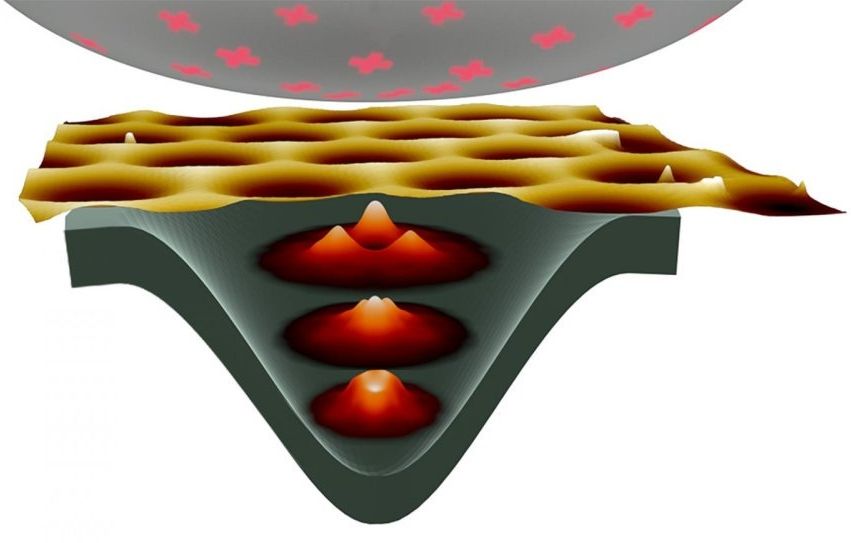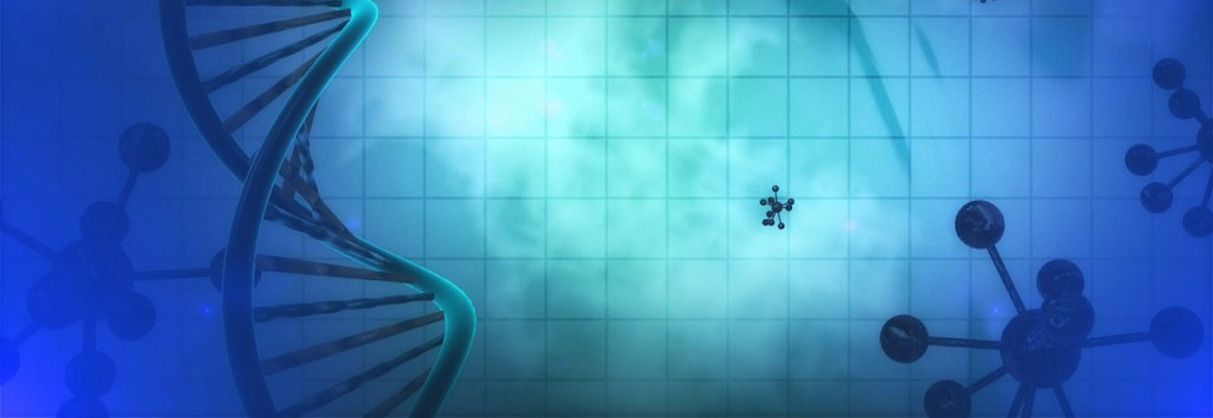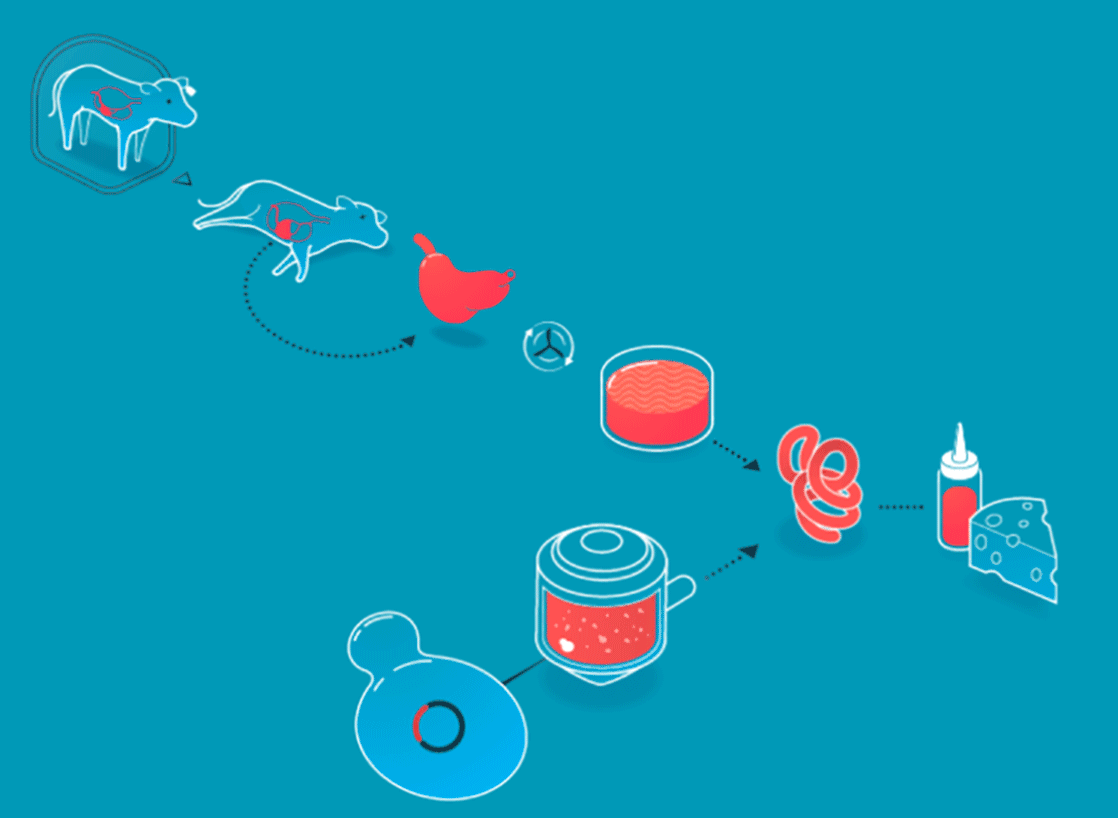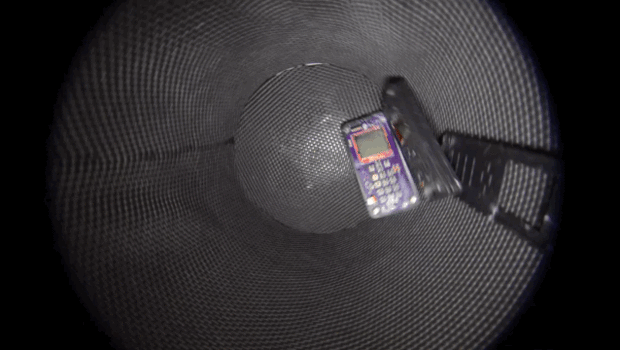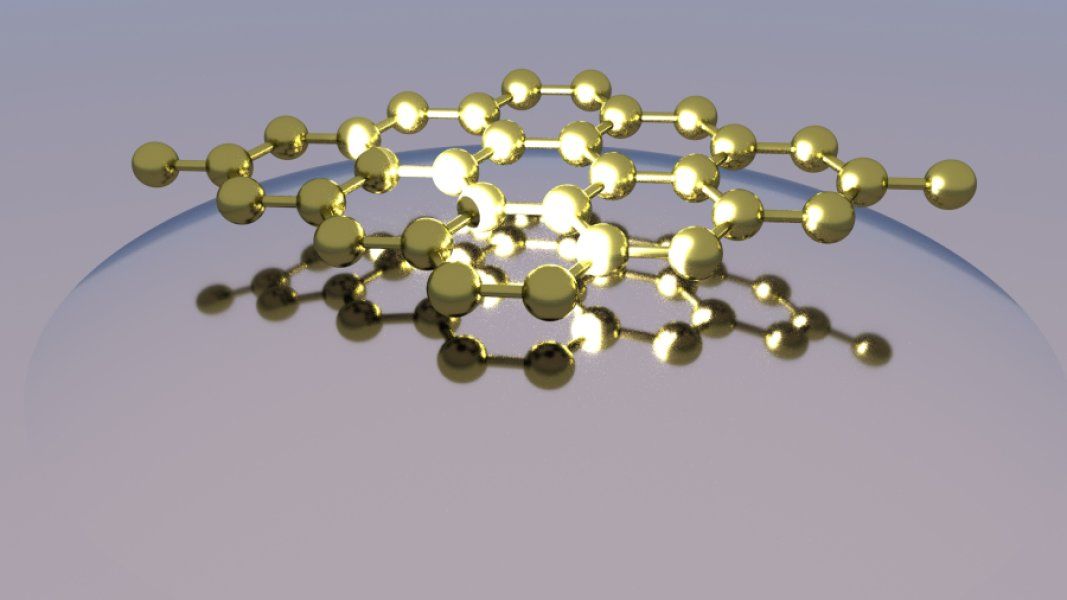Page 10942
Aug 22, 2016
‘Artificial atom’ created in graphene
Posted by Karen Hurst in categories: particle physics, quantum physics
When they are confined to a small space, the behavior of electrons can only be explained by quantum physics. Much like electrons in an atom, they are forced into discrete quantum states. These states can be used for quantum information technologies.
Aug 22, 2016
Now we can watch DNA Repair itself!
Posted by Karen Hurst in categories: biotech/medical, chemistry
Watching DNA self-repair itself.
After 2015’s Nobel Prize in chemistry was awarded for advancements in our understanding of DNA repair, a recent Nature report characterises the mechanism in molecular detail. The implications for cancer research are vast.
Researchers in Paris, France, and Bristol, England, have leveraged recent advances in microscopy and fluorescent imaging to characterise the entire process of DNA repair at the molecular level. They were able to observe RNA polymerase, which ‘reads’ DNA and initiates its replication, as it moved along the DNA strand.
Aug 22, 2016
Artificial Intelligence could help eradicate global poverty
Posted by Karen Hurst in categories: computing, information science, robotics/AI, sustainability
Another spin on AI in how it eradicates poverty; hmmm.
Eradicating extreme poverty, measured as people living on less than $1.25 US a day, by 2030 is among the sustainable development goals adopted by United Nations member states last year.
A team of computer scientists and satellite experts created a self-updating world map to locate poverty, said Marshall Burke, assistant professor in Stanford’s Department of Earth System Science.
Continue reading “Artificial Intelligence could help eradicate global poverty” »
Aug 22, 2016
Yearlong simulation of Mars on Mauna Loa is coming to an end
Posted by Karen Hurst in categories: futurism, space

Hmmm; I did know that the early day astronauts did practice the moon walk near one of the volcanoes in Hawaii.
Since August last year, six scientists have been living isolated from the outside world 8,200 feet up a dormant volcano in Hawaii. Confined to a dome 11 metre wide with a living area of about 1,000 square feet, the team is only allowed to venture outside when wearing NASA spacesuits, just like future astronauts on Mars will have to do.
Continue reading “Yearlong simulation of Mars on Mauna Loa is coming to an end” »
Aug 22, 2016
Identifying the Microbial Culprits Initiating Oceanic Nitrogen Loss
Posted by Karen Hurst in categories: bioengineering, biological
Oxygen minimum zones (OMZs) extend over about 8 percent of the oceanic surface area, but account for up to 50 percent of the total loss of bioavailable nitrogen and thus play an important role in regulating the ocean’s productivity by substantially impacting the nitrogen cycle. By sequencing single cells and metagenomes from OMZs, researchers identified bacteria of the SAR11 clade as being abundant in these areas, although no previously known anaerobic metabolism had been described for this group. Detailed sequence analysis of SAR11 single cells, followed by functional characterization experiments, revealed the presence of functional nitrate reductase pathways as a key adaptation to oxygen-poor, or anoxic, environments. These results link SAR11, the world’s most abundant organismal group, to oceanic nitrogen loss.
The Impact
Microbes play key roles in maintaining the planet’s biogeochemical cycles, and while the role of SAR11 bacteria in the marine carbon cycle has been well documented, its important role in regulating nitrogen bioavailability was hitherto unknown. In partnering with a national user facility, scientists had access to state-of-the-art single-cell sorting and synthetic biology capabilities at the DOE JGI, enabling them to identify and functionally characterize the role of SAR11 in oxygen minimum zones in the ocean.
Continue reading “Identifying the Microbial Culprits Initiating Oceanic Nitrogen Loss” »
Aug 22, 2016
Cellular agriculture: a way to feed tomorrow’s Smart City?
Posted by Karen Hurst in categories: food, space
New way to farming.
Cellular agriculture enables production of animal protein without the need to raise and manage livestock. This is an alternative which could help meet the challenges facing the agricultural sector, given the need to produce more food because of demographic changes and growing urbanisation.
The world’s population is increasing inexorably. According to the United Nations, the planet will play host to 9.7 billion inhabitants by 2050 and and cities and towns will be accommodating the majority of the population. Back in 1960, city dwellers accounted for 34% of the world’s population, but this figure had risen to 54% by 2014 and the number of people living in cities is expected to rise by 2% per year on average until 2030. These two billion extra mouths to feed and the concentration of people in urban areas means that the entire food production and distribution chain will have to be re-thought.
Continue reading “Cellular agriculture: a way to feed tomorrow’s Smart City?” »
Aug 22, 2016
The MIT Lab That’s Teaching Phones To Build Themselves
Posted by Karen Hurst in categories: mobile phones, robotics/AI
Self-assembly; no assembly-line robots and no people need to apply.
Forget factories. MIT’s Self-Assembly Lab is designing devices that snap together in minutes.
Aug 22, 2016
Refining Optogenetic Methods to Map Synaptic Connections in the Brain
Posted by Karen Hurst in categories: genetics, neuroscience
Summary: Researchers have optimized optogenetics to map the neural circuits of the rodent brain with single neuron resolution.
Source: Max Planck Florida.
Researchers at the Max Planck Florida Institute for Neuroscience are optimizing optogenetic methods for circuit mapping, enabling measurements of functional synaptic connectivity with single neuron resolution.
Aug 22, 2016
New theory could lead to new generation of energy friendly optoelectronics
Posted by Karen Hurst in categories: computing, mobile phones, particle physics, quantum physics
Researchers at Queen’s University Belfast and ETH Zurich, Switzerland, have created a new theoretical framework which could help physicists and device engineers design better optoelectronics, leading to less heat generation and power consumption in electronic devices which source, detect, and control light.
Speaking about the research, which enables scientists and engineers to quantify how transparent a 2D material is to an electrostatic field, Dr Elton Santos from the Atomistic Simulation Research Centre at Queen’s, said: “In our paper we have developed a theoretical framework that predicts and quantifies the degree of ‘transparency’ up to the limit of one-atom-thick, 2D materials, to an electrostatic field.
“Imagine we can change the transparency of a material just using an electric bias, e.g. get darker or brighter at will. What kind of implications would this have, for instance, in mobile phone technologies? This was the first question we asked ourselves. We realised that this would allow the microscopic control over the distribution of charged carriers in a bulk semiconductor (e.g. traditional Si microchips) in a nonlinear manner. This will help physicists and device engineers to design better quantum capacitors, an array of subatomic power storage components capable to keep high energy densities, for instance, in batteries, and vertical transistors, leading to next-generation optoelectronics with lower power consumption and dissipation of heat (cold devices), and better performance. In other words, smarter smart phones.”
